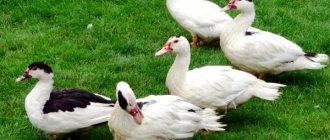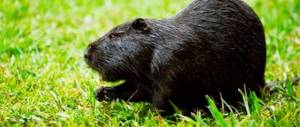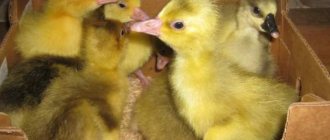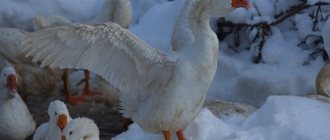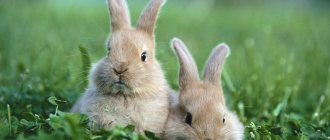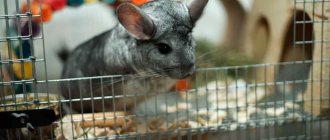Leghorn chickens are a highly productive egg-producing breed, the bird was bred in Italy. Today it is the basis of most egg-laying crosses and is actively used in poultry farming.
More than 20 varieties of the breed are known, differing in plumage color and productivity. Despite the long existence of the breed, Leghorns are still being improved today, and new species lines are appearing. From the article you will learn what is remarkable about the breed and the features of its breeding.
Description of the breed
Photo:
Leghorn chickens are unpretentious, so they can be found even in the coldest corners of the world.
Externally, these are large birds with the following characteristics:
- proportional wedge-shaped body;
- a thin and long neck on which is a small head;
- the comb is leaf-shaped, painted in a bright red hue. In roosters it is straight, in chickens it hangs to the side;
- the legs are long, in young birds they have a yellowish tint, turning white as the bird grows older;
- earlobes are white or blue, earrings are always red;
- the back is curved, the chest is convex;
- the eyes are small, the iris is yellow, orange or light brown;
- in chicks the skin is slightly yellow, in adults it is flesh-colored.
More than 20 colors of Leghorn plumage have been bred, but white birds are the most popular. Brown, partridge, motley and even black are also found on private plots. The birds have a calm, phlegmatic character and get along well with other inhabitants of the farm.
Description
Due to the fairly old age of this breed and numerous experiments by breeders around the world, there are no clear standards for Leghorns. In addition, in the 20th century, many regional varieties were bred, which led to the formation in each country of its own Leghorn breed standard, which is based on intra-breed subtypes.
The most popular subspecies of leghorns in the world are:
- white is the most common variety. They are often grown in northern and southern latitudes, as they adapt well and are not picky about living conditions and nutrition. In addition, they are capable of laying eggs for more than 200 days annually, which is why they are valued by poultry farmers. Biological material of this variety was used to breed other breeds;
- brown - this subspecies is often called Italian partridge chickens. They, like white leghorns, are egg-laying breeds, however, in these birds, males and females differ significantly in their plumage. The males are quite bright - a golden neck and a large spreading tail, but the females look dull compared to the males;
- cuckoo-partridge — males of this variety of leghorns have a light-colored neck, a black tail and a brown back. Their plumage has splashes of white and silver, which create a variegated coloring. Females have a brown chest and black back and tail. The plumage has a smooth transition from brown to black, with inclusions only in the area of the wings and withers. Females lay well, but the egg size is smaller than that of other subspecies;
- goldensth - valued for its decorative appearance and high performance. One hen can lay about 265 eggs per year;
- spotted - representatives of this subspecies have a rare black and white plumage, for which they received the second name Dalmatian. This variety of leghorns was bred in 1904 and very quickly gained popularity, because in addition to the unusual colors, their egg-laying indicators are at a fairly high level;
- dwarf - very often they are called mini. They are in no way inferior to their adult relatives, but they consume approximately 40% less feed and require little space to keep them, which makes them quite popular among poultry farmers.
Characteristics of appearance
In our region, the most popular are white leghorns, which are often used in home gardens. However, in Russia there are more than 20 specialized poultry farms that raise exclusively this breed. The appearance of roosters and hens is slightly different. The most striking feature, which is characteristic of all varieties, is the comb. In roosters it stands straight, but in laying hens it hangs down.
Familiarize yourself with the features of the anatomical structure of a chicken.
The appearance of these birds is quite compact, as they have a small wedge-shaped body that gracefully rises above the ground. The head is proportional to the body. Blue or white earlobes are clearly visible on it. The iris of the eyes can be dark orange or pale yellow, its color depends on the age of the birds. The earrings of chickens are large and have a bright red hue. The neck of these birds curves smoothly. Leghorns have a large, rounded chest and a wide, flat back. The chest is pushed forward and smoothly transitions into a wide belly. Birds' wings are small and fit tightly to the body.
In Leghorns, the tail is inclined to the body at an angle of 35–40º. Most often only roosters show off with it, since laying hens often lower it down. The legs of chickens are thin and of medium length. In young individuals they are yellow, but with age they turn white. However, there are metatarsals that are bright yellow or wheat-yellow. The plumage is dense. Although the most common color is white, brown or black and white, black, silver and even blue shades can be found, because Leghorns have more than 20 different variations.
Description of appearance:
| Head | medium size |
| Crest | leaf-shaped, red |
| Beak | strong, short, yellow in color |
| Neck | long, thin, slightly curved |
| Breast | round, wide and forward |
| Stomach | wide |
| Wings | small, fit snugly to the body |
| Tail | wide, slightly inclined |
| Paws | medium length, thin |
| Plumage and color | dense, more than 20 colors |
Productive qualities
Over two centuries of breeding work, the productivity of this species has been significantly increased. Breeders tried to increase early maturity and egg production. As a result, they were able to achieve maturity in 4–4.5 months. Chickens begin to lay eggs at 4.5–5 months and in a year they are able to lay 300–350 eggs. This figure may vary for different areas, so the average value is often indicated as 220–240 eggs per year. The weight of the egg varies depending on the leghorn subspecies and is 55–58 g. However, in some crosses the egg weight can reach 65 g. In addition, depending on the type of cross, the shell color may be different.
Often this breed has a white shell, but since there is a great demand for brown eggs in the world, crosses have been bred that are characterized by such a shell. For breeders, such indicators as the percentage of fertilized eggs and hatchability of young animals are very important. If you take 100 eggs, then no more than 95 of them will be fertilized. And from these no more than 87 chickens will hatch, since the hatchability percentage does not exceed 87–92%. Unfortunately, the difficulties do not end there, since Leghorns are very bad mothers, because they lack maternal instinct.
Did you know? In 1956, a Leghorn hen laid an egg weighing 454 g, which had a double shell and two yolks.
Therefore, for effective hatching, it is best to use incubators. And in those rare cases when laying hens exhibit the hen instinct, producers try to immediately get rid of such individuals. It is important for poultry farmers to know the weight of live chicken and rooster, as well as the yield and quality of meat. Leghorns, as egg-laying breeds, are characterized by small dimensions: a rooster - no more than 3 kg, a laying hen - up to 2 kg. When slaughtering these birds, the yield is very small and therefore they can only be used as a soup set, and not for fillets. In addition, their meat is tough, coarse and tasteless, and also dry.
Character
This breed is characterized by a peaceful, calm temperament, but it has increased activity. Free range is more optimal for them than cage keeping. If you decide to keep Leghorns in a fence, then you should think about a mesh that will prevent the birds from flying up and protect them from birds of prey.
Although these chickens are characterized by unpretentiousness in keeping, this should not be abused, since under unfavorable housing conditions the birds are prone to pecking.
Advantages and disadvantages
- pros
- rapid puberty (4–4.5 months);
- begin to lay eggs early (at 4.5–5 months);
- increased egg production (up to 300 eggs);
- easily adapt and at the same time quite unpretentious to the conditions of detention;
- have a calm and flexible character;
- tolerate negative temperatures well;
- high hatchability rates of young animals;
- low feed costs;
- attractive appearance.
- Minuses
- a sharp decrease in egg production in the second year of life;
- lack of mother hen instinct;
- low meat yield.
Origin story
Leghorn is a breed of Italian origin. They received their name only towards the end of the 20th century after productive chickens were brought to America.
It is believed that Leghorn comes from the word Livorno, the name of a large Italian port. After the active spread of the bird, work began on its selection; chickens were crossed with Minorcas and Japanese ornamental roosters.
It was then that Leghorn chickens received their signature white plumage. Birds arrived in Russia only in 1925, and chickens began to be bred on an industrial scale only in the 70s.
Today, the Leghorn breed is one of the most common breeds of egg-laying chickens in the world.
Breed varieties
Initially, the breed was presented only in white, but today several color forms have appeared.
Brown Leghorn
The second name of the variety is Italian Partridge chickens. The subspecies begins its journey from Italy. The main distinguishing feature is pronounced sexual dimorphism. The rooster's back and neck are bright, all shades of golden-red. Black plumage on tail, chest and belly. Feathers with a rich steely sheen. Females are much more modest in color.
Brown Leghorns in the aviary
Cuckoo-Partridge Leghorn
- In 1929, breeders from Great Britain began working on creating autosex chickens. Birds with cuckoo-colored plumage and striped Plymouthrocks were crossed with golden Kempins. The sex of chicks at the age of one day is recognized by the color of the down. The egg production of the first chickens received was quite low.
Cuckoo-partridge chickens - standard - By crossing partridge leghorn roosters and striped plymouth hens, poultry farmers began to select a “pure” autosex breed. The cuckoo roosters obtained in this cross were re-crossed with partridge hens. It took several generations to recreate the classic leghorn type in chickens. The new breed form was called Legbar.
Legbar chickens on the range - At the same time, work was underway to create autosex chickens in Germany. As a result, viable birds were bred, mobile, active, with a friendly character. The color of the plumage of adult females and males is different. Chicks at the age of one day also differ - cockerels are lighter.
Chickens of this subspecies are good layers, but poor brood hens.
Golden Leghorn
The subspecies is characterized by high egg production - chickens are capable of producing about 260-270 eggs per year. Birds are light—the body weight of roosters does not exceed two kilograms, and that of chickens is about one and a half kilograms.
Golden Leghorn is very beautiful
The appearance of the birds is extremely attractive with bright, golden plumage.
Spotted Leghorn
One of the rarest subspecies of the breed. In 1904, the first chicks with an interesting, black and white coloring were obtained in a Scottish village. At first, the blood of the black minor was infused to obtain spotting. However, for many years the subspecies has been bred purely and is not allowed to be crossed with any other form of Leghorn or breed of chicken. This coloration is found exclusively in these leghorns. Other black and white breeds have a large portion of black feathers.
Spotted Leghorn hen sits on eggs
Spotted Leghorns have a predominant color of white. The patterns on the feathers are not chaotic; upon closer examination, you can notice a pattern in the coloring.
Varieties
It is believed that Leghorns today are no longer an independent breed, but a kind of genetic base for the formation of new species. In each country, active work is underway to develop new egg crosses and varieties of the breed.
There are more than 20 breeding factories operating in Russia alone. Only white and dwarf leghorns are the most popular.
White
The key species of the breed differs from other varieties in the snow-white color of its plumage; other colors on the body are a defect from the standard.
The bird does not lose productivity even under unfavorable conditions and can withstand severe frosts. It was white chickens that gave rise to all the other 20 shades of plumage, which is associated with an increase in demand for brown shells and the decorative appearance of birds.
Brown
They also have an egg production orientation and are distinguished by a beautiful golden-brown plumage color. They have pronounced sexual dimorphism; roosters can be distinguished not only by size, but also by the presence of long red-gold feathers on the neck.
It is acceptable to have black plumage, which in the sun has a green tint.
Cuckoo-partridges
This variety is often used for genetic work. Birds are highly adaptable and unpretentious in maintenance.
Unlike other species, Leghorns with this color are larger and can grow up to 4 kg. Chickens lay smaller eggs, but egg production is at a high level.
Golden
One of the most beautiful varieties of the breed. The plumage is painted in a rich golden color, the comb and earrings are red, and the earlobes are yellow. They are used only as ornamental birds, but egg production can reach 260 eggs per year.
Dwarf
This subspecies of the breed is called B-33. The weight of a rooster can reach only 1.7 kg, chickens are slightly less. Adults have white plumage, chicks are always yellow. The dwarf variety of the breed has an energetic temperament but is not aggressive towards other birds on the farm.
They are economical to maintain and are a real decoration of the site. But even among dwarf leghorns, egg production indicators are at the same level - a laying hen lays up to 250 eggs per year.
Varieties and Leghorn chickens
There are about 20 subspecies of the Leghorn breed.
The most popular types of leghorn include:
- white;
- dwarf;
- striped-motley;
- spotted Dalmatian;
- pearl lavender;
- partridge-cuckoo;
- brown;
- golden, etc.
These leghorn subspecies differ not only in plumage color, but also in a number of other characteristics. The Striped and Pied Leghorn was obtained through long-term selection. The work was carried out to increase body weight, accelerate maturation and increase egg production. These birds have bright black and white plumage. The variety belongs to the meat and egg direction. By 5 months, chickens gain up to 1.7 kg of weight, and by one year - up to 2.1 kg. Laying hens begin laying eggs already at 6 months.
Dwarf Leghorns have white plumage and are precocious. Hens weigh up to 1.3 kg, and adult roosters - 1.5 kg. Despite the fact that these birds are small in size, their egg production is high. They produce up to 260 eggs per year, weighing up to 60 g. Chickens begin to produce their first eggs at 4.5 months. Dwarf Leghorns consume 35% less feed. At the same time, females of this breed do not have maternal instinct, so offspring can only be obtained in an incubator.
The White Leghorn has all the characteristics of the breed. These birds are distinguished by high egg productivity. They are resistant to Russian climatic conditions. Chickens are unpretentious in care and feeding. They are well adapted to growing in cells on an industrial scale.
The Leghorn Dalmatian has spotted white and black plumage. This variety was obtained at the beginning of the 20th century. by crossing a white Leghorn with a Minork. For a long time, the characteristic spotted color was considered abnormal. However, later an increased egg production of Dalmatians was noted and work was carried out to consolidate the characteristics.
Partridge-cuckoo leghorns have motley wavy plumage with the inclusion of silver, black, reddish and white feathers. Cockerels are lighter than hens. These leghorns reach a weight of 3.5 kg. Birds begin to lay eggs at 6 months. The maternal instinct is well developed, so offspring can be obtained without an incubator.
The brown or partridge leghorn is also distinguished by high egg production. Females have simple brown-brown plumage. Males are more colorful. Their neck and head are covered with reddish-brown feathers. The belly, chest and tail are black with a metallic sheen.
The Golden Leghorn is a meat breed of chicken. They are highly decorative, so they are often planted in private backyards. Both hens and roosters are covered with golden plumage with a shimmer. The body weight of an adult chicken is about 1.9 kg, and that of a rooster is 2.2 kg. Layers produce up to 260 white-shelled eggs per year.
The Pearl Lavender Isabella Leghorn is covered in grey-pink plumage. Looking at photos of these birds, you can see the difference between males and females. Chickens have smoother transitions than roosters. The weight of males reaches 2.6 kg, and females - 3 kg. They begin to lay eggs at 4.5 months. 1 chicken produces up to 300 eggs per year. Almost all eggs are fertile. When using an incubator, hatchability of young animals is 90%.
Leghorn chickens with unique plumage colors.
Price
The cost of young birds depends on the region, farm, and the color of the bird’s plumage. On average, the price for laying hens is 500 rubles, roosters are more expensive - from 700 rubles.
Hatching eggs are cheaper, the price tag starts from 75 rubles. The breed has a high hatchability rate, but before purchasing eggs, you must check them with an ovoscope for defects.
Reviews
Leghorn chickens have received the most positive reviews from poultry farmers. The breed is distinguished by high levels of egg productivity, unpretentiousness and adaptability to living conditions.
Birds are actively used on industrial and private farms as genetic material for breeding new highly productive crosses.
Among the disadvantages are the lack of brooding instinct and the high price of high-quality young animals. It should be remembered that in the second year egg production decreases, so the population of laying hens should be updated in a timely manner.
Productivity, egg production
Beginning in the late 19th century, selection for Leghorns was carried out to increase egg production and reach sexual maturity earlier. On average, roosters weigh 2.5-2.7 kg, chickens weigh less - up to 1.9 kg.
The meat of this breed is not of high quality, it is very dry and bony. Egg production is one of the highest among purebred breeds; the annual number of eggs varies from 160 to 300 depending on the age of the bird and conditions of detention.
The weight of the egg reaches 65 g, the shell is very strong and white. Oviposition begins at 17-18 weeks of life, and from the second year the indicators gradually decrease.
Productivity
Leghorn poultry were bred specifically to produce eggs. This is one of the most popular breeds in the world. On average, females weigh up to 2 kg, and roosters up to 2.5 kg. Despite the high weight indicators, this is not a meat breed, it is an egg-laying type of chicken. Their meat is tasteless. In females during the reproductive period, the meat is especially dry and tough. Therefore, many breeders allow birds to feed various carnivores or prepare jellied meat from them.
The breed has excellent egg production characteristics. When preparing the right balanced diet, it is possible to stimulate egg production in laying hens for 300 eggs. All chickens will start laying eggs when they reach 5 months of age.
In the first year of life they produce the maximum number of eggs.
At first the eggs are small. A month after reaching the reproductive period, the eggs increase in volume and become larger. The average weight of an egg varies from 67 to 70 g. The main reason why chickens lay few eggs is their health and possible poor health.
Breeding
Laying hens of the Leghorn breed completely lack the brooding instinct, so for breeding you need to purchase raised young animals or use hatching eggs.
Chickens have a high survival rate and have strong immunity. If you plan to raise young birds yourself, then you need to prepare a brooder - a room for keeping birds in the first weeks of life.
For a small herd, a box or enclosure equipped with a heat source and lighting is suitable.
Specifics of maintenance and care
The White Leghorn is distinguished by its unpretentiousness, adaptability and ability to acclimatize to almost any living conditions.
It is permissible to raise birds using the floor or cage method; in a small yard it is recommended to equip a spacious walking area.
On industrial farms, Leghorns are raised only in cages, which increases the risk of developing diseases. To avoid outbreaks of infection, vaccinations are carried out and antibiotics are added to the feed.
The requirements for keeping this breed are the same as for other representatives of the egg-producing type.
An important requirement is to limit noise, since during the period of active egg laying, laying hens are very anxious and afraid of any loud sounds. This leads to attacks of hysteria, and the birds' productivity is significantly reduced.
Regardless of the method of keeping, the entire flock should be provided with sufficient space; usually the chicken coop is planned at the rate of 3-4 individuals per 1 m2.
It is necessary to have drinking trays (100x120 mm), as well as several feeders. For birds, you need to equip perches for sleeping and nests for laying hens. The maximum humidity in the room should not exceed 70%, the optimal temperature is 12-16°C.
Advantages and disadvantages
After high egg production, one of the main advantages of Leghorn chickens is autosexing: from the first days of life, laying hens can be distinguished from cockerels. Value for industrial or small farm production:
- feeding males until they gain weight is expensive;
- there is no point in keeping more than 1 male for every 8-10 females;
- The sooner culling occurs, the better.
In addition to high productivity and autosexing, Leghorn chickens have other advantages:
- willingness to lay eggs at an early age;
- easily get used to heat and cold;
- can be grown in cages or in a small walking area;
- Leghorns eat little;
- easy care;
- calm disposition;
- some varieties can be used as decorative ones without loss of productivity.
Disadvantages of Leghorns:
- the meat has low commercial quality;
- high egg production continues for a year, then the stock needs to be renewed;
- no brooding instinct;
- Chickens are very shy during the laying process.
Feeding
There are no special feeding requirements for Leghorns. Chickens of this breed have a poor appetite, which allows them to save on feeding. However, you should be careful about the quality of food.
To maintain a high level of egg production, usually only feed is used that contains all the necessary components.
It is recommended to diversify the diet with fresh herbs in summer, vegetables and straw in winter. Every day you need to add chalk, slaked lime and shellfish to the food to form the shell. To maintain egg production, hens are also given vitamin supplements and high protein foods.
The average daily amount of feed should be 65-75 g per bird; food is best divided into two meals. In addition, there should always be sufficient fresh water in the chicken coop.
Chickens up to 14 days of age are kept in a separate room, gradually transferring them to an adult diet. To avoid problems with egg production, from the 6th day onwards, chicks should be offered shellfish, feed chalk or crushed shells. The diet of chicks is the same as for other breeds.
Special features of the Legbar breed, the pros and cons of keeping them
Legbar chickens on the range
The cream legbar male is vigilant, a wonderful protector of his chickens. Laying hens are poor hens and have high egg production. Legbar eggs have a blue tint, less often olive. Visually, the egg appears to be smaller than those of other breeds. This is due to their more round shape. Weighing the egg shows a mass of about 60 grams, taking into account their egg production, a very impressive result. Female legbars begin to lay eggs early at the age of four or six months and continue to lay eggs up to two years.
Birds of this breed are very resilient and require walking in the fresh air. Since they are very mobile, at least 0.5 square meters are needed per individual. paddock They can get by with virtually no feeding; they have enough food on the run. But in winter they are picky about food.
To keep them in winter, so that they continue to lay eggs productively, above-zero temperatures are required. Therefore, the chicken coop must be built warm.
Diseases and their treatment
In general, Leghorns are a disease-resistant breed. In crowded housing or regular exposure to noise, laying hens may experience attacks of mass noise hysteria. The birds begin to scream heart-rendingly, hit the walls, and attacks of causeless aggression occur. This leads to injuries from the sharp corners of the cages, injury to the limbs and decreased productivity.
Adult chickens often have problems with the oviduct - it becomes inflamed and falls out (salpingitis). As a rule, this pathology develops starting from 2 years of life.
The disease not only causes severe discomfort and pain to the bird, but can also lead to infections. If treatment is not started in time, there is a risk of vitelline peritonitis - inflammation of the abdominal cavity.
Regardless of the size of the herd, you should regularly clean the feeders and change the bedding. At least twice a year, the chicken coop is deratized and treated for helminths.
In industrial farms, all birds must be vaccinated against major diseases (infectious bronchitis, salmonella, adenovirus, coccidiosis).
Performance
Since the appearance of Leghorns to this day, active breeding work has been carried out aimed at increasing egg production and early maturity. Leghorn chickens become sexually mature at 17-18 weeks of age. Hens begin laying eggs at the age of four to five months. Record egg production indicators for hens reach 300 eggs per year, with an absolute recorded maximum of 350. Average indicators fluctuate around 220-240 eggs. Birds are light and their weight rarely reaches two kilograms.
The white egg of a Leghorn is much larger than that of a normal laying hen.
Their high productivity allows them to be kept for commercial purposes. The eggs have excellent taste and have a white, smooth shell.
During the period of active egg laying, chickens are extremely susceptible to noise. Sudden and loud sounds can lead to noise hysteria and cause panic in birds. They begin to fight, flap their wings, and may pluck their feathers. Hysteria negatively affects the productivity of chickens.
